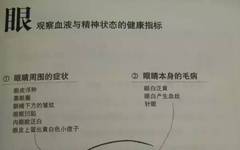01
All Courses by Ni Haixia
02
Complete Guide to TCM Treatments for Common Diseases
03
Focused Study on TCM Topics
04
Online Reading of TCM Learning Books

Eyes:
1. Symptoms Around the Eyes
Eye lid swelling — Indicates reduced function of internal organs (kidneys, gastrointestinal, heart) leading to fluid retention in the body.
Dark circles — Occurs when blood contains excessive old waste, causing the area around the eyes to appear dull (kidneys).
Wrinkles below the eyes — A sign of aging.
Sunken eye sockets — Indicates excessive consumption of body energy.
White inner eyelids — A symptom of anemia.
Yellowish-white small bumps on eyelids — Indicates high cholesterol.
2. Eye Conditions
Yellowing of the sclera — A warning sign of liver and gallbladder issues (jaundice).
Blood vessels in the sclera — Indicates liver stress causing vascular congestion.
Eye twitching — A warning sign of declining immunity.
3. Functional Disorders of the Eyes
Inability to fully close eyes during sleep — Caused by gastrointestinal issues leading to muscle weakness throughout the body.
Easy eye fatigue — Indicates liver dysfunction.
4. Eye Discharges
“Eye crust” — Yellow eye discharge indicates “pus” (inflammation).
Dry eyes — Can easily lead to eye diseases.
Excessive tearing — Occurs when liver function is weakened.
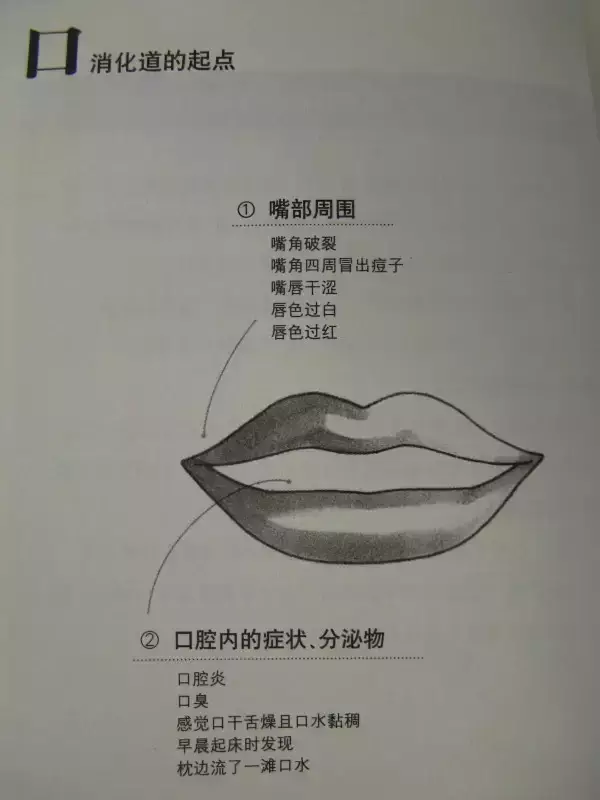
Mouth:
1. Symptoms Around the Mouth
Cracked corners of the mouth — Caused by gastritis leading to false appetite.
Acne around the corners of the mouth — Indicates weak gastrointestinal function.
Dry lips — Increased body temperature can cause dry lips.
Pale lips — A warning sign of insufficient blood.
Red lips — Indicates excessive heat accumulation in the body.
2. Oral Symptoms and Discharges
Stomatitis — Evidence of lowered immunity.
Bad breath — Can have five causes (gastritis, indigestion, rhinitis, gum disease, dental plaque).
Feeling dry mouth with thick saliva — Indicates overall body fluid deficiency.
Finding a pool of saliva on the pillow in the morning — Indicates weak gastrointestinal function.
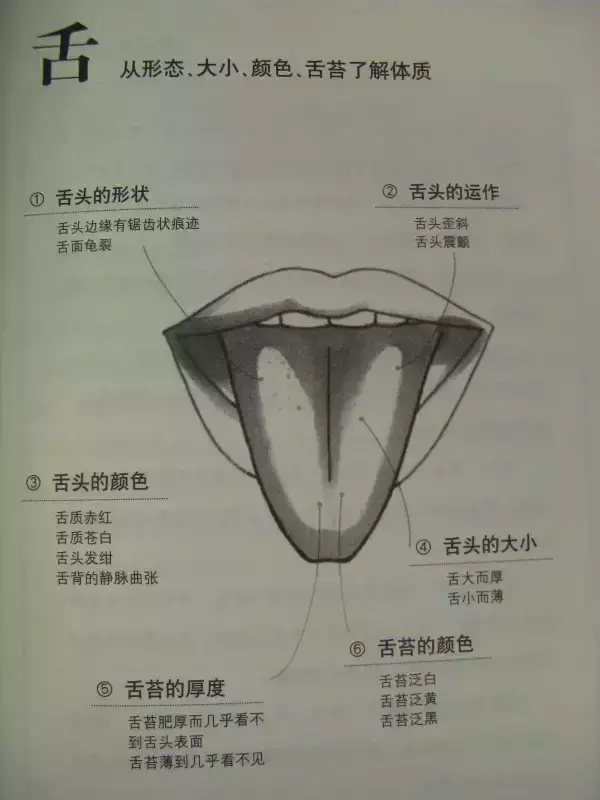
Tongue:
1. Shape of the Tongue
Jagged edges on the tongue — Indicates swelling due to excessive fluid.
Cracked tongue surface — Indicates insufficient fluid.
2. Tongue Movement
Slanted tongue — A signal of cerebrovascular issues.
Trembling tongue — Indicates body weakness.
3. Color of the Tongue
Red tongue body — Indicates elevated body temperature.
Pale tongue body — Indicates body weakness.
Purple tongue — A signal of overly thick blood.
Varicose veins on the tongue’s back — A dangerous signal of poor blood flow.
4. Size of the Tongue
Large and thick tongue — Indicates excessive fluid in the body.
Small and thin tongue — Indicates insufficient fluid in the body.
5. Thickness of the Tongue Coating
Thick tongue coating, almost obscuring the tongue surface — Indicates gastrointestinal disorders or serious diseases.
Thin tongue coating, almost invisible — Indicates body weakness or allergic constitution.
6. Color of the Tongue Coating
White tongue coating — Indicates low body temperature and reduced body function.
Yellow tongue coating — Indicates internal “heat”.
Black tongue coating — Indicates extreme physical exhaustion.
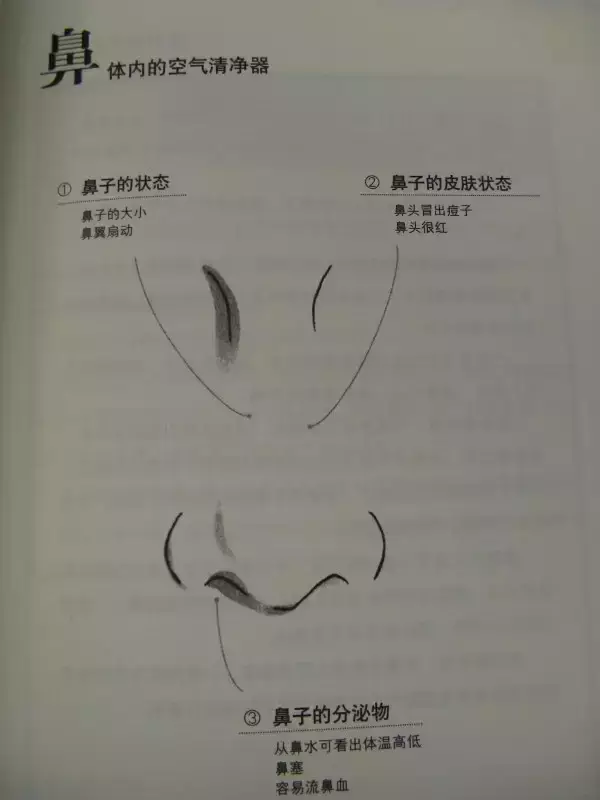
Nose:
1. Condition of the Nose
Size of the nose — Indicates strength of respiratory function.
Nostrils flaring — Indicates difficulty in breathing.
2. Skin Condition of the Nose
Acne on the nose tip — May indicate respiratory issues.
Red nose tip — A signal of excessive alcohol consumption.
3. Nasal Discharges
Nasal discharge can indicate body temperature — Treatment for colds varies based on the type of nasal discharge.
Nasal congestion — If ignored, can lead to systemic hypoxia.
Frequent nosebleeds — Often caused by weak gastrointestinal function.
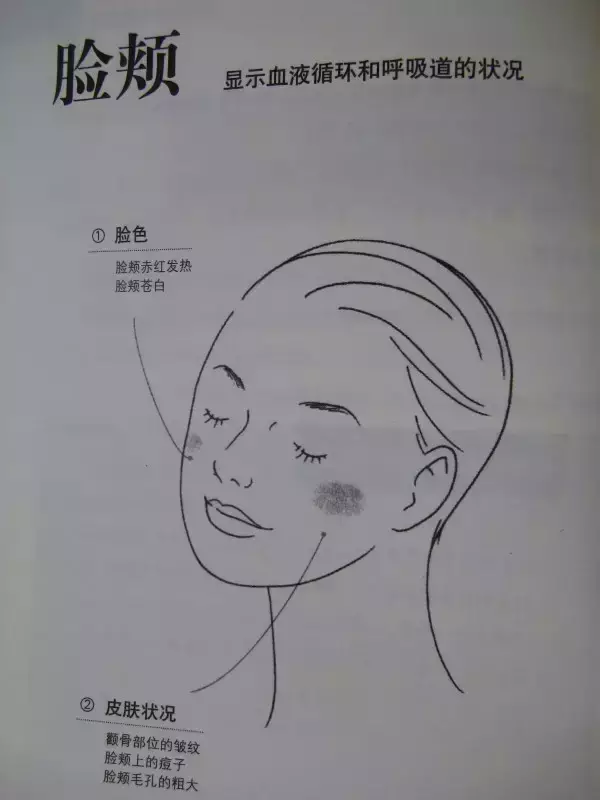
Cheeks:
1. Complexion
Red and hot cheeks — Indicates abnormal body temperature regulation.
Pale cheeks — Indicates insufficient oxygen supply in the body.
2. Skin Condition
Wrinkles on the cheekbones — Mainly caused by UV exposure.
Acne on the cheeks — Pay attention to diet and possible constipation.
Enlarged pores on the cheeks — Reduced sebum is the main cause of enlarged pores.
Teeth:
1. Condition of the Teeth
Prone to cavities — A precursor to osteoporosis.
Gray teeth — Indicates the formation of cavities inside the teeth.
2. Condition of the Gums
Swollen gums — Indicates gastritis or fatigue.
Bleeding gums — Indicates gum inflammation or weak gastrointestinal function.
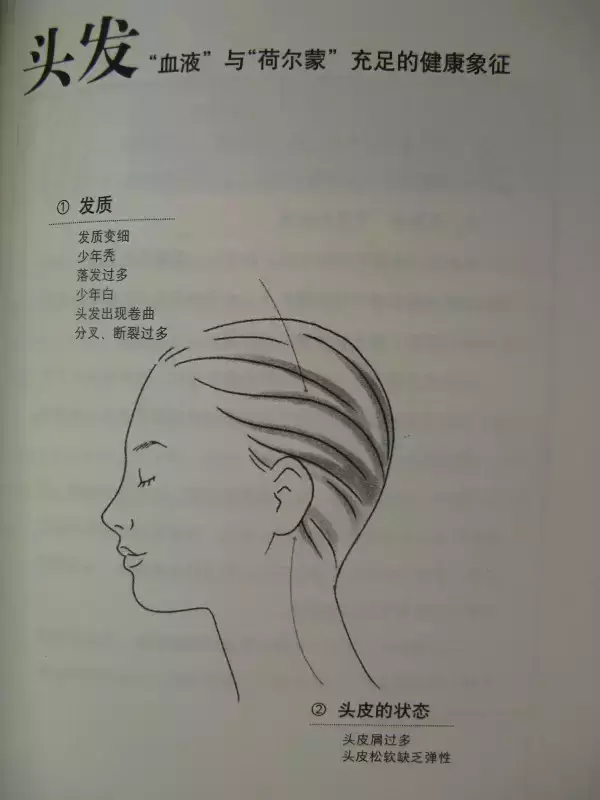
Hair:
1. Hair Quality
Thinning hair — Indicates a tendency towards anemia or aging.
Juvenile baldness — Excessive fat intake can deplete hair (reproductive organ decline).
Excessive hair loss — Can indicate early signs of disease.
Premature graying — Relates to calcium and hair.
Curly hair — Indicates thinning hair quality.
Excessive split ends and breakage — Menstruation can cause hair anemia.
2. Scalp Condition
Excessive dandruff — Can be classified as “dry” (requiring iron and protein) or “oily” (requiring improved fat metabolism and Vitamin B supplementation).
Soft and lack of elasticity scalp — Indicates symptoms of swelling.
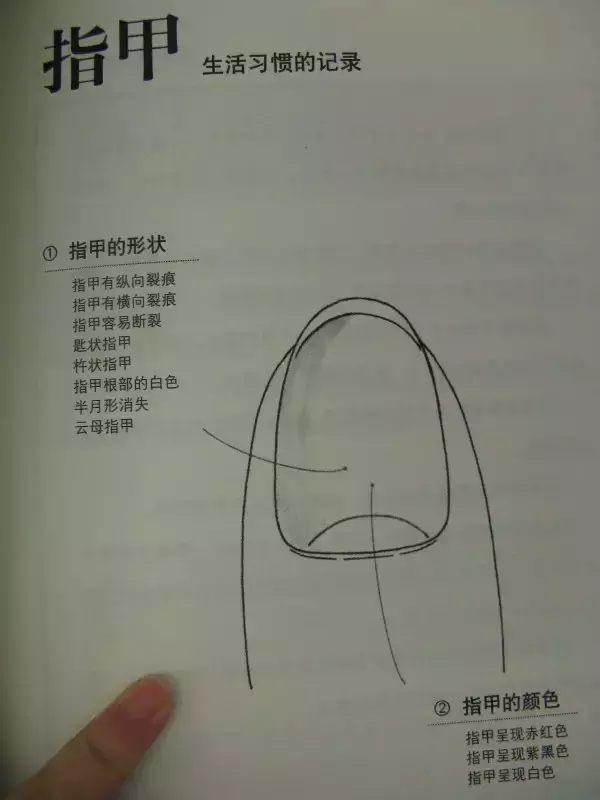
Nails:
1. Shape of the Nails
Vertical ridges on the nails — “Wrinkles” formed by aging.
Horizontal ridges on the nails — Indicates records of “past” (body discomfort).
Prone to breakage — Indicates anemia or poor liver function.
Spoon nails — A signal of the body’s distress (severe anemia, uterine fibroids, endometriosis; detailed examination recommended).
Clubbing nails (feeling of pressure and deformation) — Common in individuals with heart disease.
Disappearance of the white crescent at the nail base — Indicates physical decline.
Dry nails — Indicates a dry state of the nails.
2. Color of the Nails
Red nails — Indicates overly thick blood (pay attention to cardiovascular health).
Purple-black nails — Indicates unclear blood or poor heart function.
White nails — Indicates a tendency towards anemia.

